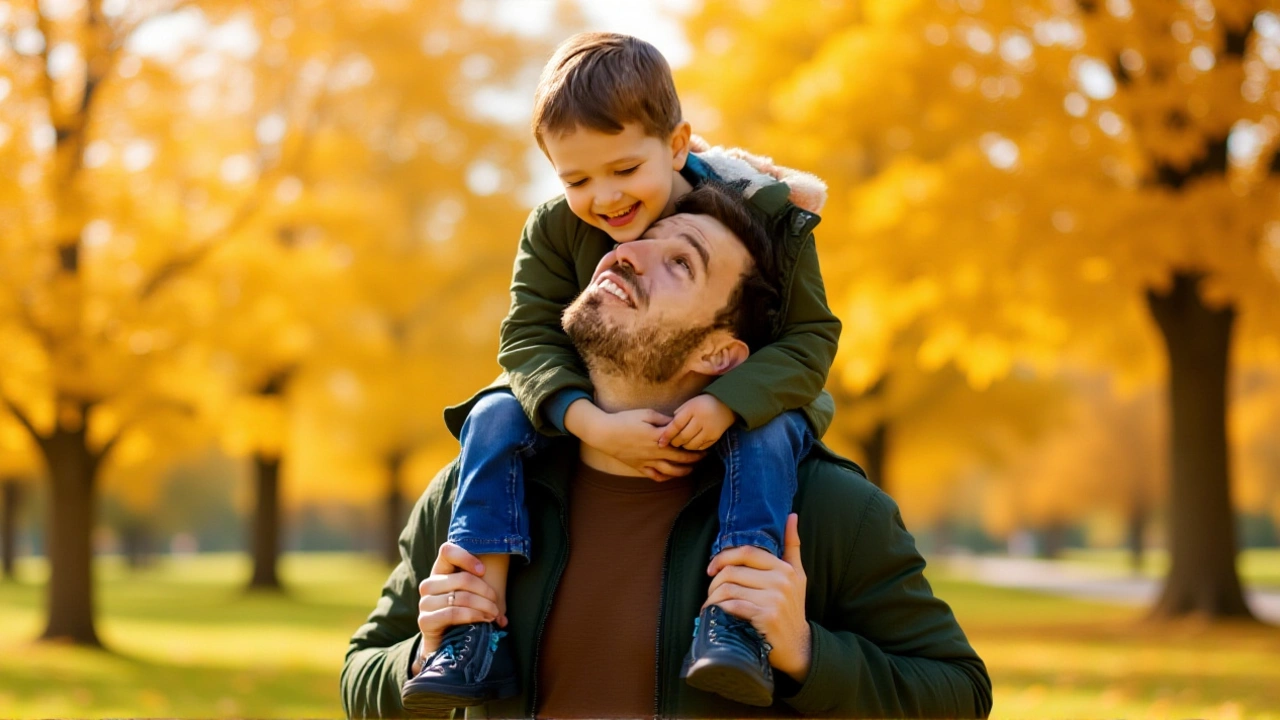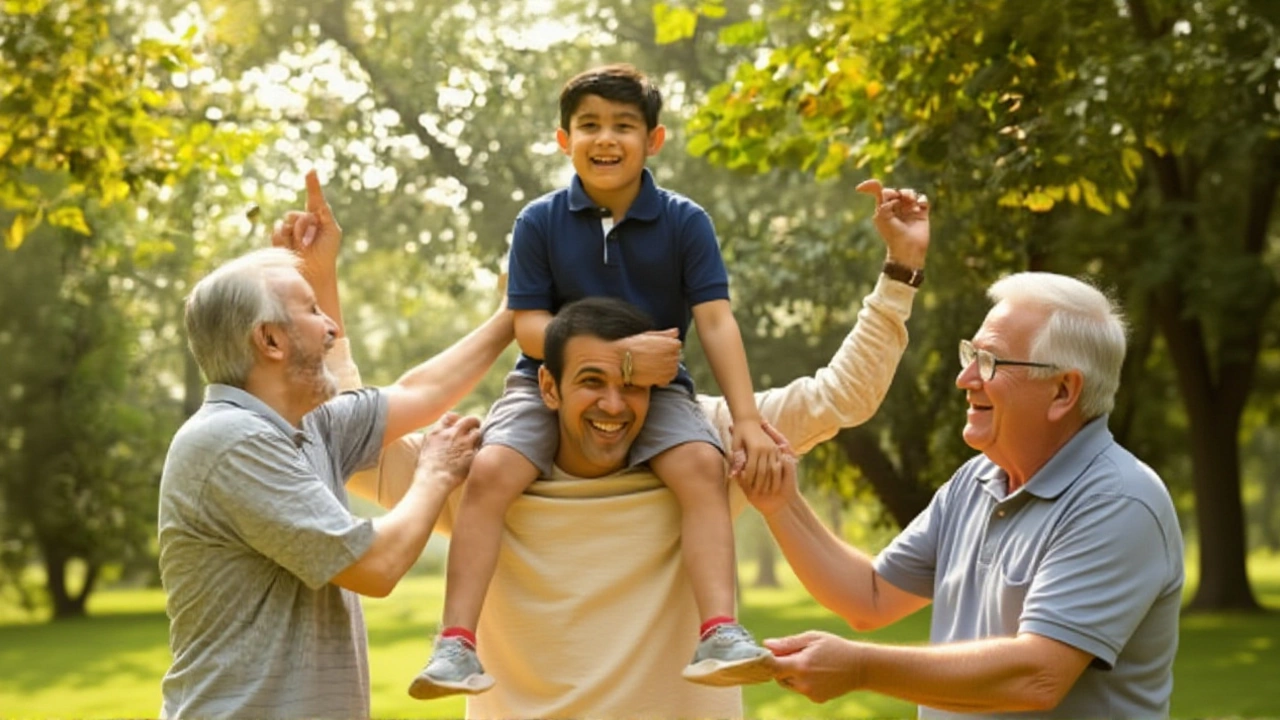On November 18, 2025, just one day before International Men's Day, Indian media outlets and brands launched a coordinated social media blitz — not with rallies or speeches, but with curated quotes, Instagram reels, and WhatsApp-ready messages. From jewelry retailers to national newspapers, the focus wasn’t on policy or protest. It was on sentiment. And it worked. CaratLane.com, a Bengaluru-based jewelry brand, dropped over 30 relationship-specific wishes, pairing them with ads for men’s earrings. Meanwhile, Hindustan Times and Economic Times published lists of 50 to 100+ messages, all timed to go live on November 19. The message? Celebrate the men in your life — but do it online, with hashtags.
From Jewelry Ads to Mental Health Mantras
The campaign wasn’t just about flattery. It was layered. CaratLane led with lines like, “True masculinity is kindness in action,” followed by a subtle nudge: “Add this to his cool quotient.” Their content was neatly divided into categories: messages for fathers, friends, colleagues. One quote read: “Men who listen, understand, and support are the pillars of every home.” It wasn’t just poetic — it was marketable.Meanwhile, SwagMagic.com, a promotional products company, leaned harder into the social critique. Their editorial piece urged readers to “challenge harmful stereotypes and promote positive masculinity.” They didn’t just offer wishes — they offered a mission. “Let’s commit to supporting men’s mental health,” one line read. And they tagged it with #MentalHealthMatters, #MensWellbeing, and #PositiveMasculinity.
The twist? These weren’t isolated efforts. They were synchronized. Every major publication — from Hindustan Times in Noida to Economic Times in Mumbai — published their content on November 18. That’s the pattern now. International Men’s Day isn’t celebrated on the day anymore. It’s pre-scheduled. Pre-packaged. Pre-shared.
The Instagram Surge: RJ Shubhi’s Reel and EDFIL Learning’s Message
While print and e-commerce led the charge, social media turned it into a movement. RJ Shubhi, a radio jockey with the Instagram handle@rj_shubhi, posted a reel on November 18 at 1:12 PM UTC. The caption: “Relatable much? Happy International Men’s Day 🤍.” It featured quick cuts of men laughing, crying, holding babies, fixing cars — all set to a soft acoustic track. Within 24 hours, it had over 3,800 likes and 360 comments. The hashtags? A laundry list: #MensDayIndia, #StrongMen, #MensHealth, #ModernMen. It wasn’t just a post. It was a cultural signal.
EDFIL Learning, an educational nonprofit, matched that energy with a clean, minimalist Instagram graphic that read: “A celebration of men’s contributions, positive masculinity, and mental health awareness.” No sales pitch. No product. Just a statement. And it resonated. Comments poured in: “My dad never talked about his anxiety until last year,” one user wrote. “This post made me call him.”

Why This Matters — And Why It’s Problematic
There’s value here. Men still die by suicide at nearly four times the rate of women in India. Many still believe asking for help is weakness. Campaigns like these — even if commercialized — normalize conversations that were once taboo. When Economic Times tells readers to share messages with “your father, brother, and male friends,” it’s quietly reminding people: your man might be hurting. Say something.But here’s the uncomfortable truth: this is performative activism. Brands are riding a wave they didn’t create. CaratLane didn’t start International Men’s Day. They didn’t fund mental health helplines. They just made a pretty graphic and called it a movement. The same goes for SwagMagic — their “positive masculinity” slogan is more Instagrammable than actionable.
And what happens after November 19? Do the quotes disappear? Do the hashtags go silent? Do men still feel like they can’t cry at work? Do fathers still hide their depression behind “I’m fine”? The campaign doesn’t answer that. It just gives you something to post.
The Bigger Picture: A Day, Not a Movement
International Men’s Day, observed since 1999, was founded to highlight male health, gender equality, and positive male role models. In India, it’s become a content holiday. There’s no national event. No government proclamation. Just a flood of curated messages from media companies trying to stay relevant.Compare it to International Women’s Day. In India, that day sparks protests, policy debates, and corporate pledges. Men’s Day? It’s a carousel of quotes and earrings. The disparity tells you everything. We celebrate men when it’s easy. We challenge systems when it’s inconvenient.
Still — if a well-placed quote makes a son text his dad, or a wife finally ask, “Are you okay?” — then maybe this matters. Maybe the digital noise is the first step toward real silence-breaking.

What’s Next?
Expect this trend to grow. Next year, expect AI-generated personalized messages. Expect TikTok challenges. Expect brands to bundle “Men’s Day” gift packs with therapy subscriptions or meditation apps. The question isn’t whether the content will evolve. It’s whether the conversation will.For now, the best thing you can do isn’t to share a quote. It’s to ask the man in your life: How are you, really? And then — listen. Without fixing it. Without judging it. Just listening.
Frequently Asked Questions
Why is International Men's Day on November 19?
November 19 was chosen to honor the birthday of African-American physician Dr. Jerome Teelucksingh, who championed men’s health and gender equality in Trinidad and Tobago in 1999. The date also aligns with the anniversary of the first International Men’s Day event in 1999. Unlike International Women’s Day, which has UN backing, Men’s Day remains grassroots — which is why corporate campaigns now dominate its visibility.
How do these social media campaigns impact men’s mental health in India?
While the campaigns don’t fund counseling services, they normalize talking about emotions. A 2024 study by the Indian Journal of Psychological Medicine found that men exposed to positive masculinity messaging on social media were 37% more likely to confide in family members about stress. The real impact isn’t in the likes — it’s in the private messages that follow: “I saw your post. I needed to hear this.”
Are these messages only for Indian audiences?
The content is culturally tailored for India. Hashtags like #MensDayIndia and references to family structures (fathers, brothers) reflect local norms. Western campaigns focus more on workplace equality or prison reform. In India, the emphasis is on emotional availability within homes — a reflection of how masculinity is still deeply tied to familial roles here.
Why did so many brands publish on November 18 instead of the 19th?
Social media algorithms reward early content. Brands know users scroll through feeds the night before major holidays. Publishing on the 18th ensures their posts appear in the first wave of November 19 feeds. It’s not generosity — it’s strategy. But it also means the real day, November 19, often feels like an afterthought.
Is there any government support for International Men’s Day in India?
No. Unlike International Women’s Day, which is officially recognized and sometimes marked by public events, International Men’s Day has no state backing in India. No ministries issue statements. No schools hold assemblies. The entire observance is driven by media, NGOs, and influencers — which is why it feels more like a marketing campaign than a national moment.
What’s the difference between #PositiveMasculinity and traditional ideas of manhood?
Traditional masculinity often equates strength with silence, stoicism, and dominance. Positive masculinity rejects that. It celebrates emotional honesty, caregiving, vulnerability, and mutual respect. The shift isn’t about making men “less masculine” — it’s about expanding what masculinity can mean. That’s why quotes like “Great men don’t seek power — they inspire trust” resonate. They redefine power.
